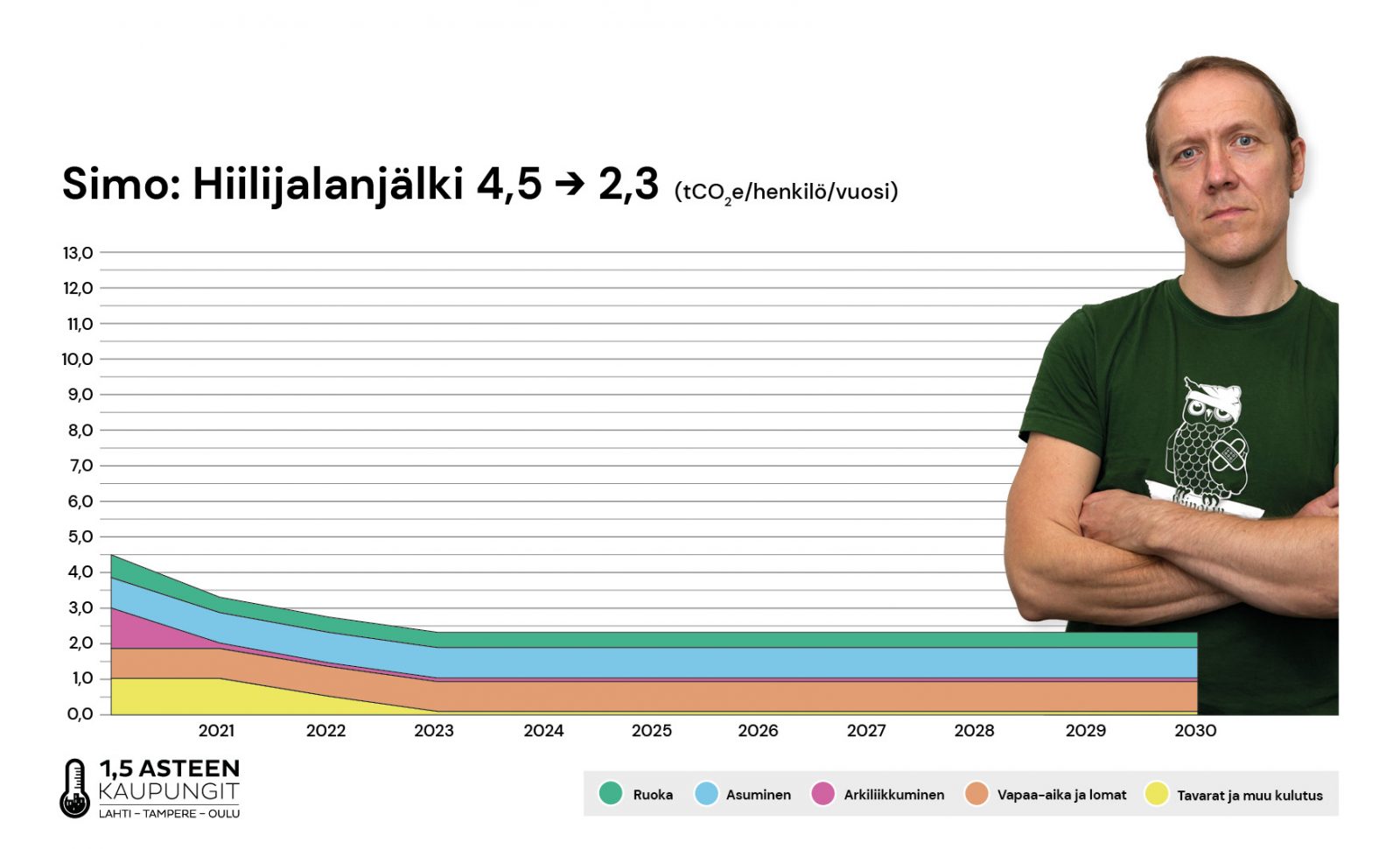My partner and I are very family-orientated and take great joy in the little things in life. The environment has always been important to me and has only become more important after I met my partner, who used to be an orienteer. We spend almost all of our free time as a family out in the woods with packed lunches in our backpacks.
My own packed lunch is always vegetarian. I have been a vegetarian for 20 years, but my children and partner eat meat as well. I am partial to cheese myself. We have a principle at home of never throwing anything away. It is our way of trying to minimise food waste. I am interested in reducing waste as a consumer otherwise as well. We always look for the reduced stickers on supermarket shelves on our shopping trips. We still need to find places where we can buy food that would otherwise be wasted outside grocery stores as well. I have plans to experiment with apps that can be used to buy food that would otherwise be thrown away by restaurants and cafés, for example.
In addition to these food apps, we pursue a circular economy in our daily lives otherwise, too. I have started to look for and collect various kinds of materials for a construction project that we are planning. We want to build a new house on our property in Heinola, and we want it to be a zero-energy building. It would therefore generate as much energy as it consumes. We have been thinking about installing geothermal heating and producing electricity with solar panels.
I have already found many good materials in skips, and I even picked up a car load of leftover bricks from a construction site in Lahti. My friends and acquaintances also tell me whenever they see materials that I could use. I believe that a circular economy will be essential in the future.
I would like us to soon have easier ways to make use of items and materials that others do not need. That is why I have been thinking about setting up a freecycle network in our block of flats or maybe online that would allow me to recycle my own unwanted items. We already buy a lot of what we need second-hand.
The biggest change that I could make in terms of my emissions at the moment is to drive less on a daily basis. I have to use a car quite a lot because of my work, and I also drive just to run errands. Thankfully we already have a chargeable hybrid car, but I could still use my bike or public transport more for everyday things.
I would like to try cycling in the winter. After pushing a pram in the snow, I have doubts about weather conditions for cycling, however. It might not be that easy to get the children from place to place by bike in heavy snow.
Switching from a car to a bike in the winter is still some way outside of my comfort zone. We need bikes that can cope with the Finnish winter, the right cycling gear and well-maintained cycling routes. The roads must be safe for cycling.
